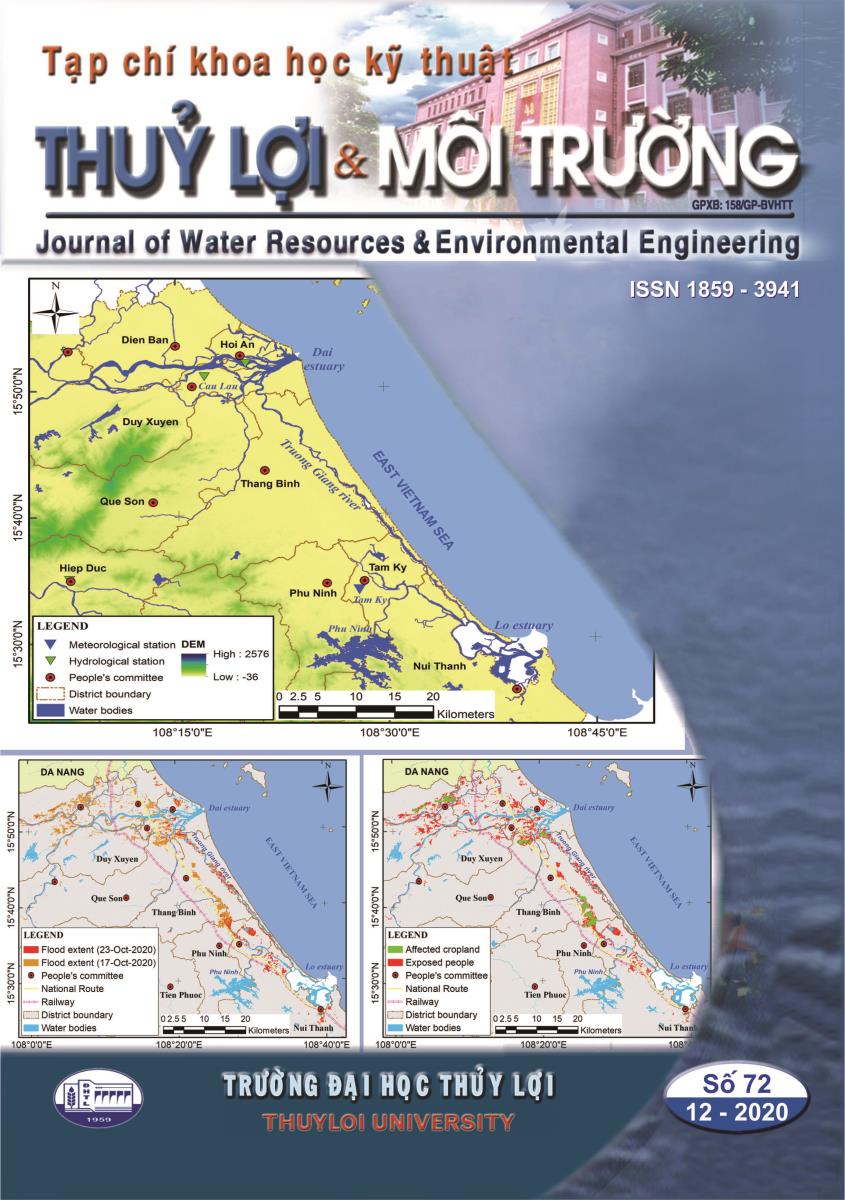The role of mangrove forest in coastal wave attenuation: Case study of Hau Loc, Vietnam
Abstract
Among the soft solutions to protect the coast from wave impacts, the effectiveness of mangrove forests mainly depends on the mangrove belt width, species of mangroves, the density and the tree age. This study evaluates the ability of two popular mangrove species in the North of Vietnam, S. caseolaris and K. obovata, in dissipating monsoon waves affecting Hau Loc coast in Vietnam using the SWAN model. The study found that S. caseolaris is more effective in attenuating waves, showing 72%−82% wave height reduction (considering a mangrove belt width of 350 m, plant aged 5-9 years and a survival rate of 80%). The calculated results are compatible with the study of Bao (2011). In the sea-level rise condition, the forest reduces over 60-70% of incoming wave height; the wave height behind the mangrove forest rises by 2.3 cm. Therefore climate change should be considered when mangroves forests are planted to stabilize the local coastline.

